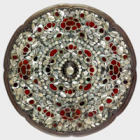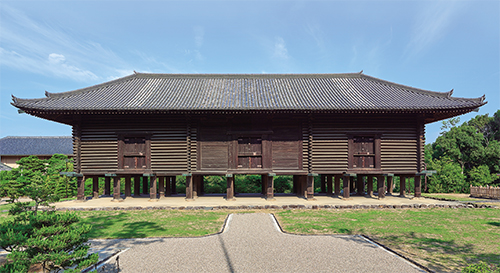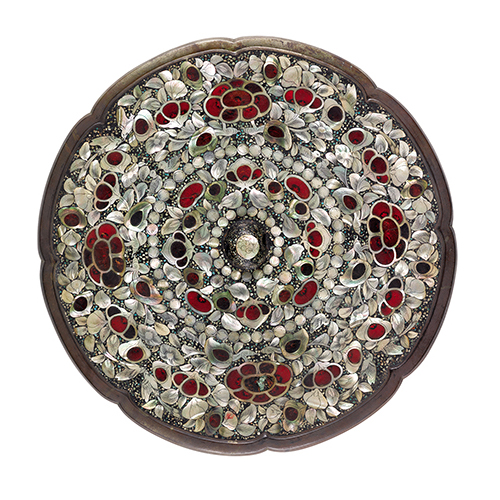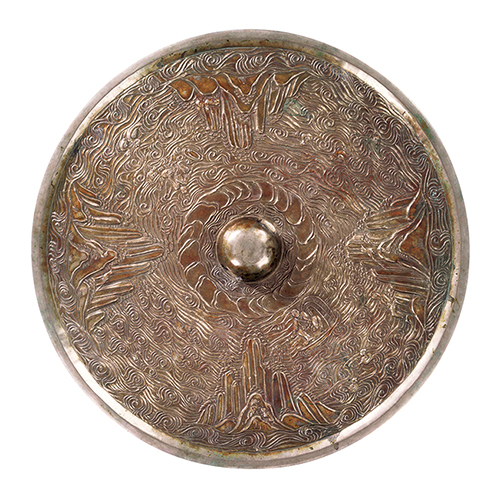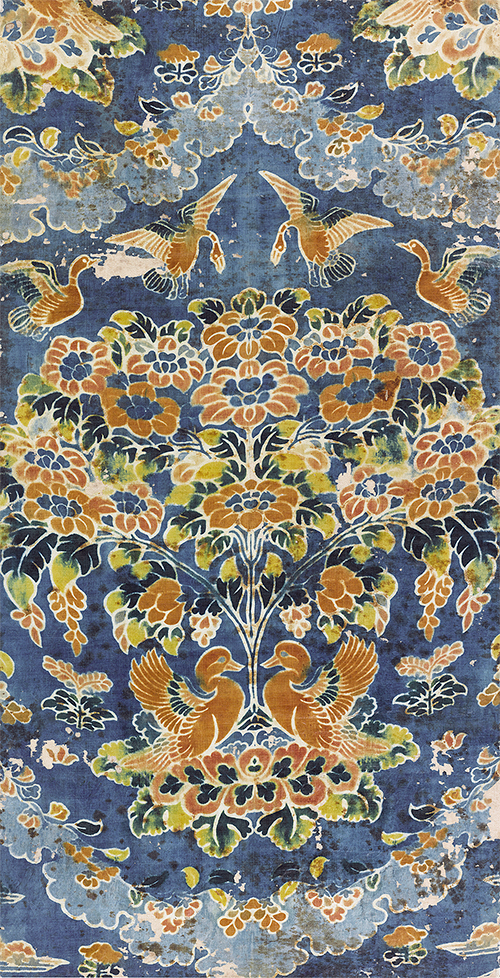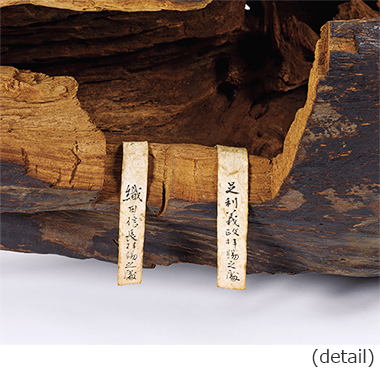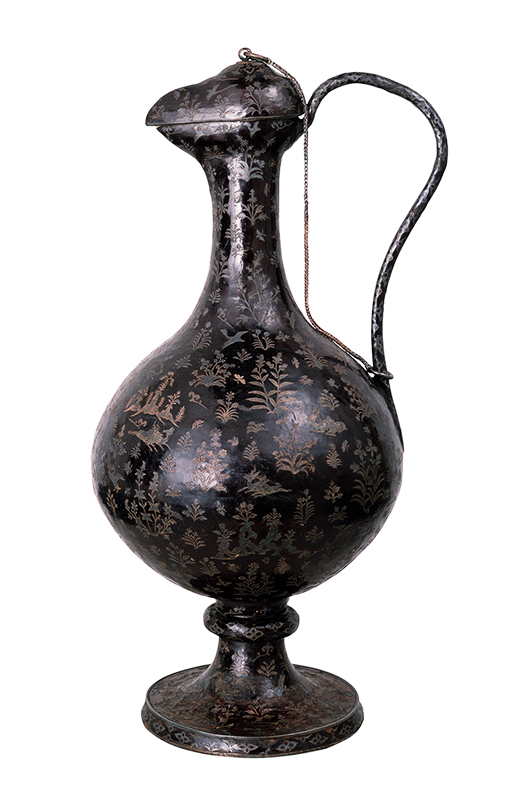Highlights of the Exhibition
The Shosoin Treasures
The Shosoin Treasures are treasured artifacts stored in the North, Middle, and South Sections of the Shosoin Repository.
The North Section houses offerings made by Empress Komyo, with other offerings kept in the Middle Section. Both these sections have been locked under imperial order and required imperial authorization to open them. The South Section stores ritual items and other materials belonging to Todaiji Temple. This section remained under the control of Todaiji until the Meiji period, since when it has also been locked under imperial order.
Chapter 1: The Treasures of Emperor Shomu and Empress Komyo
On the 21st day of the 6th month, Tenpyo-Shoho 8 (756), a Buddhist ceremony was held to mark 49 days since the passing of Emperor Shomu. On this occasion, Empress Komyo offered around 650 of Emperor Shomu’s beloved treasures to the Great Buddha of Todaiji Temple with a prayer that her late husband would be swiftly delivered to a peaceful afterlife in the Buddhist Pure Land. Whenever she saw these precious objects, the Empress would feel a piercing sadness as she recalled the days spent with her husband. These emotive items have been protected and passed down to the present day as the Shosoin Treasures.
Chapter 1 introduces these treasures associated with Emperor Shomu and Empress Komyo, with a focus on the items listed in the Record of Imperial Bequest to Todaiji Temple (List of Rare Treasures of the State) (No. 4; on display until November 4), a record offered up alongside the treasures.
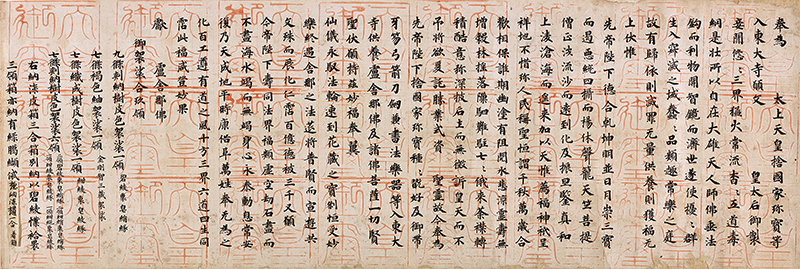

Record of Imperial Bequest to Todaiji Temple (List of Rare Treasures of the State) (detail)
Nara period, dated 756
Shosoin (The Shosoin Treasures)
(On exhibit from October 14 to November 4, 2019)
Eight-lobed Mirror, With mother-ofpearl inlay on the rear side
Tang dynasty (China), 8th century
Shosoin (The Shosoin Treasures)
(On exhibit from November 6 to November 24, 2019)
Mirror with Sea and Islands
Tang dynasty (China) or Nara period, 8th century
Tokyo National Museum (Horyuji Treasures, National Treasure)
Page Top
Chapter 2: The Resplendent World of Textiles
The Shosoin Treasures include a large number of textiles. Together with the fabrics passed down by Horyuji Temple, these are the world’s oldest examples of objects passed down from person to person (as opposed to excavated objects).
Many textiles were produced for the eye-opening ceremony of the Great Buddha of Todaiji Temple in 752 and for a ceremony held to commemorate the first anniversary of Emperor Shomu’s passing in 757. These were stored in Todaiji after the ceremonies and passed down to the present day as the Shosoin Treasures. The highly-refined textile techniques of the Nara period (710–794) set the standard for later eras in Japan, and the textiles themselves retain their brilliance to this day.
Chapter 2 introduces the resplendent world of textiles that existed under the reign of Emperor Shomu during the Nara period, with a focus on pieces from the Shosoin Repository.
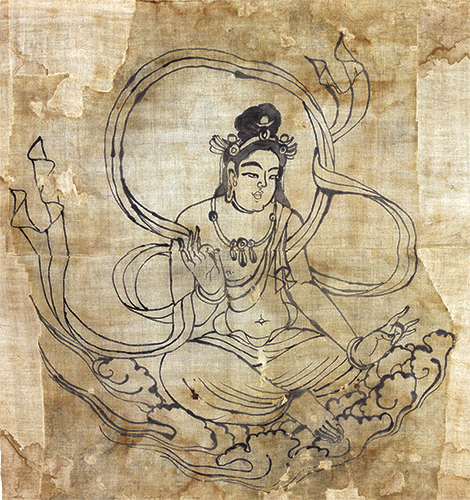 Ink Image of Bodhisattva
Ink Image of Bodhisattva
Nara period, 8th century
Shosoin (The Shosoin Treasures)
(On exhibit from October 14 to November 4, 2019)
 Ink Image of Bodhisattva
Ink Image of Bodhisattva
Nara period, 8th century
Shosoin (The Shosoin Treasures)
(On exhibit from October 14 to November 4, 2019)
Joku Mat for Offering Table, With kyokechi design on dark blue ground
Nara period, 8th century
Shosoin (The Shosoin Treasures)
(On exhibit from November 6 to November 24, 2019)
Page Top
Chapter 3: The World of Celebrated Incense
The burning of incense wood is one of the most honorable forms of offerings to the Buddha. This is why several precious blocks of incense wood were stored at Todaiji Temple. Of particular note is the Ojukuko, a piece of incense wood more commonly known by the name "Ranjatai". The Ojukuko is said to be the "finest incense under the sun," with several pieces also cut off by renowned historical figures such as Ashikaga Yoshimasa (1436–1490), Oda Nobunaga (1534–1582), and Emperor Meiji (1852–1912).
According to The Chronicles of Japan, a log of agarwood was washed ashore at Awaji Island in the third year of the reign of Empress Suiko (595). There are several objects associated with this agarwood log, and they have been passed down as part of the Horyuji Treasures.
Chapter 3 steps inside this redolent world to introduce these legendary blocks of incense wood along with incense burners and other related utensils.
Ojukuko (Incense wood)
Southeast Asia
Shosoin (The Shosoin Treasures)
Page Top
Chapter 4: The Shosoin Repository’s Biwa Lutes
The musical instruments in the Shosoin Repository hold an important place in the global history of music.
The origins of five-stringed biwa lutes trace back to India. The instrument has all but disappeared now, with the Shosoin housing the only extant example. The Five-stringed Biwa Lute, Red sandalwood with mother-of-pearl inlay (No. 69; on display until November 4) features an exotic, resplendent design rendered in mother-of-pearl inlay.
The roots of four-stringed biwa lutes lie in Persia. These instruments are characterized by bent necks and they have essentially retained their original shape to the present day. The Biwa lute, Red sandalwood with marquetry decoration (No. 71; on display from November 6) features a design in marquetry (a type of inlay made of small pieces of colored wood) and a depiction of hunting on the plectrum guard.
In Chapter 4, the world of beauty surrounding the Shosoin’s musical instruments is introduced through these resplendent biwa lutes.

Five-stringed Biwa Lute, Red sandalwood with mother-of-pearl inlay
Tang dynasty (China), 8th century
Shosoin (The Shosoin Treasures)
(On exhibit from October 14 to November 4, 2019)
Biwa Lute, Red sandalwood with marquetry decoration
Tang dynasty (China) or Nara period, 8th century
Shosoin (The Shosoin Treasures)
(On exhibit from November 6 to November 24, 2019)
Page Top
Chapter 5: The Treasures of Horyuji and Todaiji Temples
The Horyuji and the Shosoin Treasures are both representative examples of ancient Japanese arts and crafts.
Horyuji Temple was established in the 15th year of the reign of Empress Suiko (607). It burnt down in the 9th year of the reign of Emperor Tenji (670), though it was subsequently rebuilt, with the East Precinct constructed around Tenpyo 10 (738).
Todaiji Temple served as the head institution of the state-sponsored temples established across Japan by Emperor Shomu. The eye-opening ceremony of Todaiji’s Great Buddha was held in Tenpyo-Shoho 4 (752). Preserved at Todaiji’s Shosoin Repository, the Shosoin Treasures include artifacts cherished by Emperor Shomu as well as items used in the eye-opening ceremony.
Chapter 5 displays the historic treasures of Horyuji and Todaiji’s Shosoin Repository side by side to trace how aesthetic sensibilities shifted from the Asuka period (593–710) to the Nara period (710–794).

Gigaku Mask of Suiko-o (Drunken Persian King)
Nara period, 8th century
Shosoin (The Shosoin Treasures)
(On exhibit from October 14 to November 4, 2019)
Gigaku Mask of Suiko-o (Drunken Persian King)
Asuka–Nara period, 7th–8th century
Tokyo National Museum (Horyuji Treasures, Important Cultural Property)
(On exhibit from October 14 to November 4, 2019)
Persian-style Lacquered Ewer
Tang dynasty (China) or Nara period, 8th century
Shosoin (The Shosoin Treasures)
(On exhibit from November 6 to November 24, 2019)
Dragon-headed Ewer
Asuka period, 7th century
Tokyo National Museum (Horyuji Treasures, National Treasure)
(On exhibit from November 6 to November 24, 2019)
Page Top
Chapter 6: Protecting Our Precious Treasures
The Shosoin Repository has protected its valuable treasures for over 1,260 years. However, objects like lacquerware and textiles are very fragile and subject to decay, so their survival to the present day is not merely due to luck. While being looked after in ways appropriate to each era, they have been carefully passed down under the guardianship of the Imperial Court. As such, they hold a hugely-significant place in the cultural history of the world.
The repository and its treasures were inspected and repaired on numerous occasions from the Heian period (794–1192) onwards, with these activities systemized entering the Meiji period (1868–1912). Chapter 6 looks at research and conservation work carried out from the Edo period (1603–1868) to the present day. With a focus on the production of restorative copies, it also examines the importance of passing on the treasures to future generations.
The Restoration of the Shosoin Treasures
By Inagaki Ranho
Dated 1889
Tokyo National Museum
Page Top
![]() PDF 186KB)
PDF 186KB)
